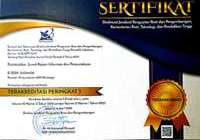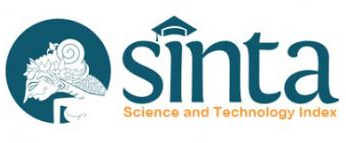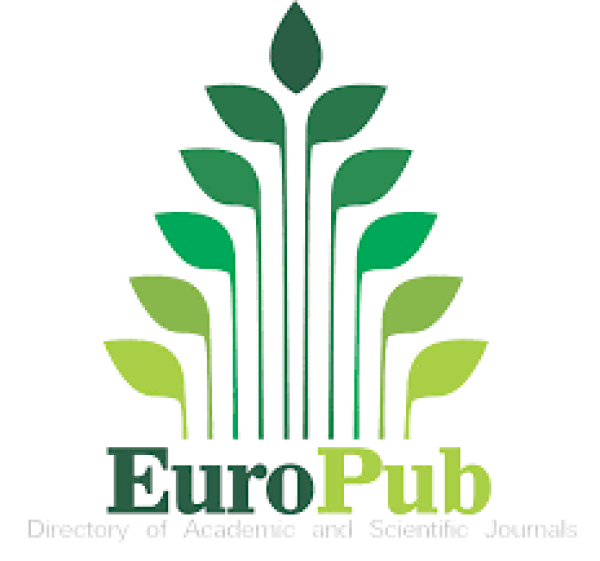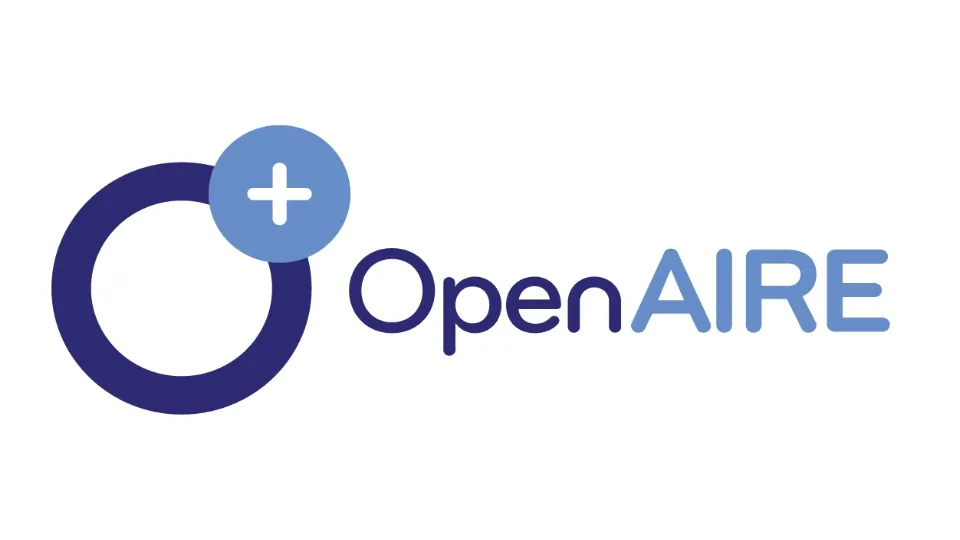Kaizen: Meningkatkan Produktivitas Pustakawan Perguruan Tinggi secara Berkesinambungan dengan Prinsip the Toyota Way
DOI:
https://doi.org/10.21154/pustakaloka.v15i2.7137Keywords:
The Toyota Way, kaizen, 5S (seiri, seiton, seiso, seiketsu, shitsuke), librarianAbstract
Abstract: The Toyota Way is a method of corporate governance that can be applied to any institution, including libraries. This can be seen from one of the concepts, kaizen, with the 5S tools (seiri, seiton, seiso, seiketsu, shitsuke). Kaizen assesses the continuous increase in librarian productivity and focuses on empowering employees, not only on machine tools. The method used in this study is qualitative, with data sources from interviews, observation, and documentation focusing on the librarians of the General Faculties within UIN Syarif Hidayatullah Jakarta, namely the Faculty of Economics and Business, Faculty of Social and Political Sciences, Faculty of Medicine, Faculty of Health Sciences, Faculty of Science and Technology, and Faculty of Psychology. The study results found that libraries can apply the 5S principles (seiri, seiton, seiso, seiketsu, shitsuke) in kaizen as a new technique for solving existing problems. The application of kaizen faces significant issues and minor problems, no matter how small the problem must be solved. Librarian productivity will increase by using suitable methods to achieve maximum results. It can be proven that applying kaizen can increase the efficiency of time utilization, prevent errors in service, and improve cleanliness and tidiness. In addition, commitment is needed in implementing a work culture between leaders and librarians.
Keywords: The Toyota Way, kaizen, 5S (seiri, seiton, seiso, seiketsu, shitsuke), librarian
Abstrak: The Toyota Way merupakan metode dalam menata kelola perusahaan yang dapat diterapkan pada lembaga apapun termasuk perpustakaan. Hal ini terlihat dari salah satu konsepnya yakni kaizen dengan alatnya 5S (seiri, seiton, seiso, seiketsu, shitsuke). Kaizen digunakan untuk menilai peningkatan produktivitas pustakawan yang berkesinambungan dan fokus dalam memberdayakan karyawannya bukan hanya pada alat mesin. Metode yang digunakan dalam penelitian ini adalah kualitatif dengan sumber data dari hasil wawancara, observasi dan dokumentasi yang berfokus pada pustakawan Fakultas Umum yang ada di lingkungan UIN Syarif Hidayatullah Jakarta, yakni Fakultas Ekonomi dan Bisnis, Fakultas Ilmu Sosial dan Ilmu Politik, Fakultas Kedokteran, Fakultas Ilmu Kesehtan, Fakultas Sains dan Teknologi, dan Fakultas Psikologi. Hasil penelitian menemukan bahwa perpustakaan dapat menerapkan prinsip 5S (seiri, seiton, seiso, seiketsu, shitsuke) dalam kaizen sebagai teknik baru dalam menyelesaikan permasalahan yang ada. Penerapan kaizen tidak hanya menghadapi permasalahan yang besar tetapi juga permasalahan kecil, sekecil apapun permasalahan itu haruslah diselesaikan. Produktivitas pustakawan akan meningkat dengan menggunakan metode yang tepat untuk mencapai hasil yang maksimal. Hal ini dapat dibuktikan bahwa penerapan kaizen dapat memberikan keuntungan meningkatkan efisiensi pemanfaatan waktu, mencegah kesalahan dalam pelayanan, peningkatan bersih dan rapi. Selain itu dibutuhkan komitmen dalam menerapkan budaya kerja antara pimpinan dan pustakawan.
Kata kunci: The Toyota Way, kaizen, 5S (seiri, seiton, seiso, seiketsu, shitsuke), pustakawan
References
Almeida, Guilherme Venanzi De, Fernando Bernardi De Souza, Humberto Rossetti Baptista, Mahesh Chander Gupta, and Renato De Campos. “Fundamental Principles of the Toyota Way and the Theory of Constraints: Comparative Analysis and Synthesis.” International Journal of Services and Operations Management 30, no. 1 (2018): 51”“71. https://doi.org/10.1504/IJSOM.2018.091441.
Andhriany, Sefy, Tri Widyastuti, Danti Melani, Program Studi, Ilmu Komunikasi, Toyota Way, Disrupsi Teknologi, Toyota Way, and Technology Disruption. “Analisis Penerapan Filosofi The Toyota Way Dalam Manajemen Public Relations Di Era Disrupsi Teknologi.” Jurnal Ilmu Komunikasi PROGRESSIO 3, no. 1 (2022): 82”“95. https://ejournal.unsa.ac.id/index.php/progressio/article/view/814.
Benkarim, Amal, and Daniel Imbeau. “Investigating the Implementation of Toyota’s Human Resources Management Practices in the Aerospace Industry.” Merits 2, no. 3 (2022): 126”“45. https://doi.org/10.3390/merits2030010.
Harshal Bhimsen Pawar. “Effective Applications of Kaizen in the Libraries.” In Innovative Best Practices and Library Services in Librarianship. Jalgaon (MS): Prashant Publications, 2022. https://www.researchgate.net/profile/Harshal-Pawar-6/publication/363652018_Effective_Applications_of_Kaizen_in_the_Libraries/links/6327e97a70cc936cd31b80dd/Effective-Applications-of-Kaizen-in-the-Libraries.pdf.
Heriyanto, Yusuf Pawit M., and Rusmana Agus. “Makna Dan Penghayatan Profesi Pustakawan Studi Fenomenologis Terhadap Para Pustakawan Pada Perpustakaan Perguruan Tinggi.” Jurnal Kajian Informasi & Perpustakaan 1, no. 2 (2013): 147”“56. http://jurnal.unpad.ac.id/jkip/article/view/11004.
Istiqoriyah, L, L Lolytasari, and Y Yarma. “Administrative History Perpustakaan UIN Syarif Hidayatullah Jakarta: Gambaran Profesionalisme Pustakawan.” AL-MAKTABAH, 2019. http://www.journal.uinjkt.ac.id/index.php/al-maktabah/article/view/16841.
Laksmi. Tinjauan Kultural Terhadap Kepustakawanan; Inspirasi Dari Sebuah Karya Umberto Eco. Jakarta: Sagung Seto, 2007.
Purnomo, Pungki. “Pengembangan Koleksi Kearifan Lokal (Local Content) UIN Syarif Hidayatullah Jakarta: Peluang Dan Tantangan.” Al-Maktabah 12, no. 1 (2013): 41”“50. https://journal.uinjkt.ac.id/index.php/al-maktabah/article/view/1591.
Suprayogi, Mukmin. “Potret Perpustakaan Fakultas Adab Dan Humaniora UIN Syarif Hidayatullah Jakarta.” Al-Maktabah 12, no. 1 (2013): 79”“93. http://journal.uinjkt.ac.id/index.php/al-maktabah/article/view/1589.
Downloads
Published
Issue
Section
License
Requirements to be met by the author as follows:
- Author storing copyright and grant the journal right of first publication manuscripts simultaneously with licensed under the Creative Commons Attribution License that allows others to share the work with a statement of the work's authorship and initial publication in this journal.
Authors can enter into the preparation of additional contractual separately for non-exclusive distribution of a rich version of the journal issue (eg: post it to an institutional repository or publish it in a book), with the recognition of initial publication in this journal.
Authors are allowed and encouraged to post their work online (eg, in institutional repositories or on their website) prior to and during the submission process, because it can lead to productive exchanges, as well as citations earlier and more severe than published works. (see The Effect of Open Access).















